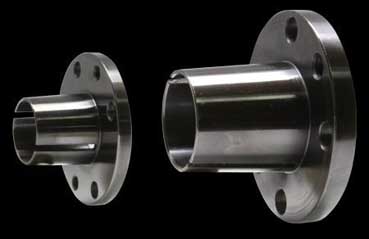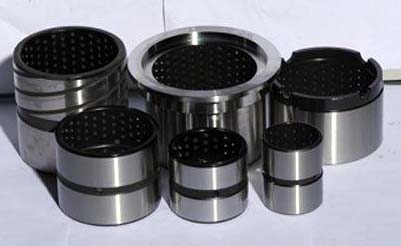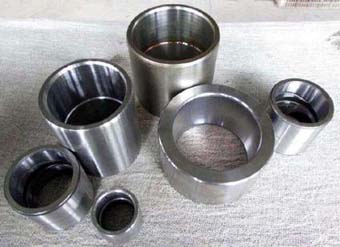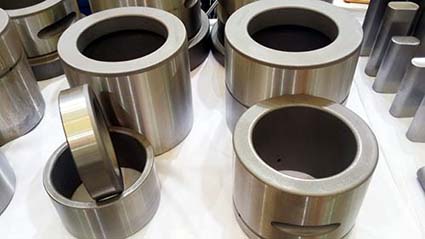Dimensional Classification and Comparison of Shaft Sleeve Parts
Classification of bushing size benchmarks
Classified by usage basis:
1. Bushing design basis. The points, lines, and faces used to determine the position of the part in the machine are called design references.
2. Bushing process benchmark. The benchmark selected for the part during machining, measurement, and inspection.
According to the form of the benchmark:
① Datum point, a point on the surface of the part.
② The baseline, the axis of the plane of revolution on the part. Datum line, axis of revolving surface on part.
③ face on the part, with the main assembly surface and support surface on the part; The main processing on the part surface (the positioning surface, the contact surface); The symmetry plane of the part (symmetric in one direction).

Selection of bushing reference
In order to reduce the error and ensure the design requirements of the parts, it is better to make the design basis coincide with the process reference when selecting the reference. When such is not coincident, the part denoted by functional size starts from the design basis, is not important process size starts from the reference label by the label or shape analysis. When more complex parts, in one direction only choose a benchmark is often not enough, I would like to add some benchmarks. Known as the main benchmark which play a major role, play a supporting role is called a secondary basis. There should be a contact size between the primary and secondary benchmarks.

Dimensional reference selection criteria for bushing parts
1, the choice of radial size reference
According to the structural characteristics of this part: The shape is relatively simple and regular, and most of them are composed of cylindrical rotating bodies of different sizes and coaxial. The steps formed by the unequal diameters allow axial positioning of the parts mounted on the shaft. Due to the design, processing and assembly processes, such parts often have chamfers, rounding, threading, thread undercuts, grinding wheel overruns, keyways, and the like. The bushing processing is recognized by the brand. Most of the processing (roughing, semi-finishing) is carried out on a lathe. A small part of the machining (finishing) is carried out on a grinding machine or other machine. According to the processing position in the main view of the axis placed horizontally, the axis of the radial dimension of this selected reference axis, so that the requirements on the design and technology unify reference during processing.

2. Benchmark selection of axial dimensions
Since there are many sizes in the longitudinal direction, which end face is selected as the main reference for the longitudinal direction. The main function of the bearing on this shaft is to support the mechanical rotating body, which is used to reduce the friction coefficient during power transmission and the mechanism that keeps the center position of the shaft fixed. Therefore, the performance of its various aspects directly affects the transmission of power and torque of the shaft, so the dimensional accuracy of the shaft and bearing connecting end faces is relatively high.

3. See more pictures, analogy, practice and contrast.
In order to properly indicate the dimensional reference of each direction of the given bushing part drawing, it is necessary to understand the characteristics and functions of the structural shapes of the various parts of the part, the mutual position in the machine and the role played. In fact, it is more to look at the "analog" method. Machining is an extremely experienced work. In actual production practice, it analyzes and contrasts the original design ideas and adds new design concepts. Relying on the "contrast method" design, look at the same type of drawings, how these drawings are handled on this issue, and help to understand the problem of size reference selection.
The choice of part reference is determined by the part's machining process or on-site machining conditions. The bushing parts are revolving parts. Considering most of its machining (roughing, semi-finishing) on the lathe, the main view generally selects the axis horizontally for projection. When selecting a datum, the axis of the part is often used as a radial dimension reference. This unifies the design requirements and the process reference during machining (the shaft ends are placed on the lathe with both ends capped against the center hole of the shaft). The main reference in the longitudinal direction often uses important end faces (surfaces with the highest machining accuracy), contact faces (bearing shoulders) or important machining faces, and other benchmarks set for ease of machining and measurement are auxiliary references.
Classified by usage basis:
1. Bushing design basis. The points, lines, and faces used to determine the position of the part in the machine are called design references.
2. Bushing process benchmark. The benchmark selected for the part during machining, measurement, and inspection.
According to the form of the benchmark:
① Datum point, a point on the surface of the part.
② The baseline, the axis of the plane of revolution on the part. Datum line, axis of revolving surface on part.
③ face on the part, with the main assembly surface and support surface on the part; The main processing on the part surface (the positioning surface, the contact surface); The symmetry plane of the part (symmetric in one direction).

Selection of bushing reference
In order to reduce the error and ensure the design requirements of the parts, it is better to make the design basis coincide with the process reference when selecting the reference. When such is not coincident, the part denoted by functional size starts from the design basis, is not important process size starts from the reference label by the label or shape analysis. When more complex parts, in one direction only choose a benchmark is often not enough, I would like to add some benchmarks. Known as the main benchmark which play a major role, play a supporting role is called a secondary basis. There should be a contact size between the primary and secondary benchmarks.

Dimensional reference selection criteria for bushing parts
1, the choice of radial size reference
According to the structural characteristics of this part: The shape is relatively simple and regular, and most of them are composed of cylindrical rotating bodies of different sizes and coaxial. The steps formed by the unequal diameters allow axial positioning of the parts mounted on the shaft. Due to the design, processing and assembly processes, such parts often have chamfers, rounding, threading, thread undercuts, grinding wheel overruns, keyways, and the like. The bushing processing is recognized by the brand. Most of the processing (roughing, semi-finishing) is carried out on a lathe. A small part of the machining (finishing) is carried out on a grinding machine or other machine. According to the processing position in the main view of the axis placed horizontally, the axis of the radial dimension of this selected reference axis, so that the requirements on the design and technology unify reference during processing.

2. Benchmark selection of axial dimensions
Since there are many sizes in the longitudinal direction, which end face is selected as the main reference for the longitudinal direction. The main function of the bearing on this shaft is to support the mechanical rotating body, which is used to reduce the friction coefficient during power transmission and the mechanism that keeps the center position of the shaft fixed. Therefore, the performance of its various aspects directly affects the transmission of power and torque of the shaft, so the dimensional accuracy of the shaft and bearing connecting end faces is relatively high.

3. See more pictures, analogy, practice and contrast.
In order to properly indicate the dimensional reference of each direction of the given bushing part drawing, it is necessary to understand the characteristics and functions of the structural shapes of the various parts of the part, the mutual position in the machine and the role played. In fact, it is more to look at the "analog" method. Machining is an extremely experienced work. In actual production practice, it analyzes and contrasts the original design ideas and adds new design concepts. Relying on the "contrast method" design, look at the same type of drawings, how these drawings are handled on this issue, and help to understand the problem of size reference selection.
The choice of part reference is determined by the part's machining process or on-site machining conditions. The bushing parts are revolving parts. Considering most of its machining (roughing, semi-finishing) on the lathe, the main view generally selects the axis horizontally for projection. When selecting a datum, the axis of the part is often used as a radial dimension reference. This unifies the design requirements and the process reference during machining (the shaft ends are placed on the lathe with both ends capped against the center hole of the shaft). The main reference in the longitudinal direction often uses important end faces (surfaces with the highest machining accuracy), contact faces (bearing shoulders) or important machining faces, and other benchmarks set for ease of machining and measurement are auxiliary references.





